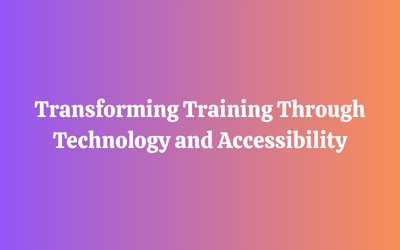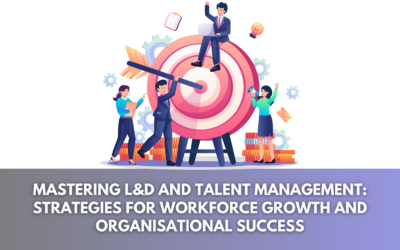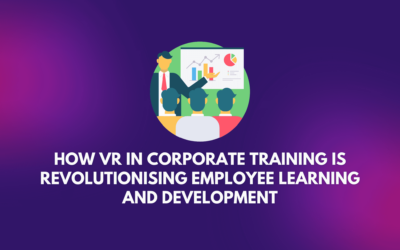How to Create a Successful L&D Strategy for 2023
How to Create a Successful L&D Strategy for 2023
Organizations have adopted new digital processes and technology during the past ten years to help them succeed in terms of output, productivity, and income through digital transformation as a response to a corporate world that is always evolving. Organizations must engage in a corporate learning and development (L&D) strategy as a tool for ongoing reskilling and upskilling of their staff to tackle new corporate problems to keep up with what has been dubbed the “fourth industrial revolution” (or “Industry 4.0”).
What Is the L&D Strategy’s Strategic Goal?
With a learning and development (L&D) strategy, businesses can design up-skilling and reskilling training programs for their workforces that are in line with corporate objectives and requirements and adapt to changes in the business environment. A solid L&D strategy enables firms to build leaders from within and empowers people to acquire the information and abilities required to be effective and productive in their roles.
Advantages of a Shrewd L&D Approach
Organizations can gain a lot by funding staff learning and development, including:
Workers who are more proficient and productive: As with any training program, the main objective is to develop the learner’s skills. Organizations can hone and upskill workers with the abilities required for a particular function or issue within the organization with the help of a corporate L&D plan.
Cultivate Internal Talent: Internal promotion is always preferable. Internal promotions are more likely to be successful because internal recruits are 61% more likely to succeed than external hires, and it demonstrates to employees that your company is eager to develop talent and promote internally.
A System of Knowledge Sharing: A well-designed L&D strategy encourages a system of information sharing, which enables firms to more effectively manage the onboarding of new employees, assign team members to projects across departments, and improve workplace transparency.
Managing Change: While organizations routinely go through change management, an L&D plan enables businesses to develop reskilling initiatives that are efficient and simple to put into place, resulting in an adaptable workplace.
High Employee Satisfaction: An environment that values learning and growth is by nature employee-friendly. It demonstrates how an organization is investing time, money, and resources in making team members into better workers. As a result, workers acquire in-depth, priceless skills that can be used to improve their resumes, get promoted, and be paid more.
Increased Employee Retention: Employees who are happier and to whom you have committed resources and a development plan are far more likely to remain with your company, enhancing retention rates across the board.
11 Steps to Creating a Successful L&D Plan for 2023
The following ten steps will help firms create an L&D plan in 2023 that is both successful and efficient:
1. Recognize your corporate strategies
You must first comprehend your overall business goals to match your L&D strategy with these organizational-wide objectives, as with all corporate programs. To discover ROI with their L&D plan, your L&D and HR teams will need to complete certain upskilling and reskilling tasks. This offers them direction as they create your learning and development strategy. This gives you a technique for getting your leadership team’s approval to allocate funds to a learning strategy that will help you build your internal talent.
2. Establish who is responsible for L&D among department heads and HR.
It is a challenge for organizations to implement L&D you must define clear ownership of the project before you can build your L&D strategy. Larger firms have developed specialized L&D teams, particularly in the years following COVID. Learning and development are still a part of HR for other SMB firms.
You’ll need to draught an ownership charter that specifies who exactly is in charge of L&D. Is it the HR division? Various team captains? A brand-new L&D unit that answers to the C-suite?
No of the ownership structure, make sure to assemble a cross-functional committee with representatives from diverse organizational areas. With everyone’s support, you will be able to gather feedback on the upskilling and reskilling needs across various business functions.
3. Establish precise corporate L&D and training objectives
Setting specific goals for your employees’ learning and development (L&D) is the next step after assigning ownership and comprehending company objectives. They ought to be focused on individuals and linked to organizational development. Make these objectives measurable, clear, attainable, and objective. To make clear what your L&D plan is meant to achieve, share these objectives with the organizations.
4. Carry out a skills analysis.
After you are aware of the objectives of your L&D strategy, you should analyze the skills gaps in the areas that your L&D program will be concentrating on. You may need to create a few distinct skill gap evaluations because this could vary throughout company departments (ie. think of an analysis for the accounting team, the marketing team, etc. – as well as an analysis for leadership, manager training, etc.)
After finishing, you’ll be in a better position to assess the level of L&D training required for various departments and specific personnel. By doing so, you’ll be able to focus your efforts and design individualized learning opportunities.
5. Create Contextual Learning Pathways for Many Functions
Once the skills analysis is complete, use this knowledge to develop contextual L&D experiences for the various skill levels of your team members. You should try to include numerous staff training techniques as well as diverse multimodal learning forms like reading, listening, watching, and interactive training materials.
A significant L&D trend for 2023 is the repurposing of learning and development content into interactive, in-app experiences that provide employees with solutions to their problems as they arise at work. This trend should be implemented into your numerous learning journeys.
6. Upgrade the L&D software stack.
You must allocate a portion of your L&D money to employee software and technology to develop these different learning paths and accurately assess the success of your training. Your L&D team will be able to develop, design, and publish learning courses in a variety of formats, track progress, host courses, evaluate knowledge retention, collect feedback, and do much more with the help of these tools.
Several of the most well-liked L&D tech stack tools are as follows:
- Learning Management Systems (LMS)
- Learning Experience Platforms (LXP)
- Employee Training Software
- Employee Onboarding Software
- Digital Adoption Platforms
- Online Course Providers
- Employee Performance Support Systems
7. Implement Your L&D Plan
It’s time to implement your L&D strategy once you’ve finished crafting it. Take leadership feedback into consideration before expanding it to the broader organization. Also, you ought to consider “soft-launching” your L&D program with a small, select group of people, such as one or two carefully chosen teams. This enables you to address the learning curve of a first program launch and make those adjustments before a full-scale L&D launch.
When you do introduce your L&D strategy to the entire firm, make sure you publicize it. Inform your staff that you are making an investment in their development and that your success depends on their support. Having L&D champions in significant positions throughout your firm makes this easier to adopt, so be sure to Get leadership support across all of your departments.
8. Evaluate the Success of Your Learning and Development Plan
Measuring ROI is one problem with staff training.
But, as was already said, adopting L&D software gives you the resources you need to accurately assess the success of your training strategy. Establish KPIs for things like course completion rates, training advancement rates, assessment results, reducing skill gaps, enhancing team competence or productivity, increasing digital adoption rates, etc.
You’ll be able to identify weak points in your L&D program this way and fix them as soon as they become obvious. Also, you’ll be able to benchmark your growth in learning and development and create new objectives for future development.
To determine whether there have been any advancements in overall business KPIs that can be connected to employee learning and development, you need also to overlay business performance and your L&D program. It can be challenging to link correlation to cause, but massive data gathered from your team’s L&D software stack can be used to conclude.
9. Get feedback from staff members on your L&D strategy.
Get qualitative data from team members who are participating in your L&D plan in addition to data on the success of your L&D approach. This will enable you to identify areas that want development and determine whether your staff members are finding your strategy to be generally beneficial. You won’t be able to meet the goals you’ve set if team members perceive your L&D plan as an HR mandate or as being unhelpful. Employee buy-in will decrease.
Look for opportunities to get input from diverse team members and stakeholders at different periods, such as:
- Moment-to-moment learning
- Upon the completion of the main courses, post-training surveys
- 1-1 meetings and performance reviews
10. Use an Agile Methodology and Continuously Improve Your Strategy
Be adaptable in your L&D strategy. Initial learnings, training advancement, team member feedback, new company objectives, and more must all be taken into consideration and used to continuously develop your L&D plan. You can use new data and insights to pivot to new learning opportunities by fostering an agile approach to employee learning and development.
11. Include Learning and Development in Your Key Business Strategy
Finally, businesses should try to include learning and development in all of their goals. Understanding your business strategies is the first stage in this list, and it links into this.
Simple staff assistance, training, and development can spur corporate growth despite being frequently ignored. After you have an L&D strategy in place, start incorporating elements of it into each quarterly goal for your department.
Learn More
Our News
- AI
- Animations
- Articulate
- Articulate 360
- Articulate Engage
- Articulate Live
- Articulate Presenter
- Articulate Quizmaker
- Articulate Replay
- Articulate Review
- Articulate Storyline
- Articulate Storyline 3
- Articulate Studio
- bite sized learning
- Characters
- Content Library
- Corporate Communication
- E-Learning
- e-Learning Authoring Tools
- Employee Engagement
- Game-Based Learning
- Gamification
- Gamiflexer
- Go Sales
- Healthcare
- Instructional Design
- Interactivity
- Knowledge Transfer
- L&D Trends
- Learning
- Learning & Development
- Learning Experience platform
- Learning Management System
- LMS
- LXP
- Microlearning
- mLearning
- Mobile Learning
- Nugget Learning
- Online Training
- Peek
- Performance Support
- Preso
- Quiz and Assessment Platform
- Replay 360
- Rise
- SCORM
- Screen Capture
- Software
- Storyline 360
- Studio 360
- Training Management
- Trainings
- Uncategorized




